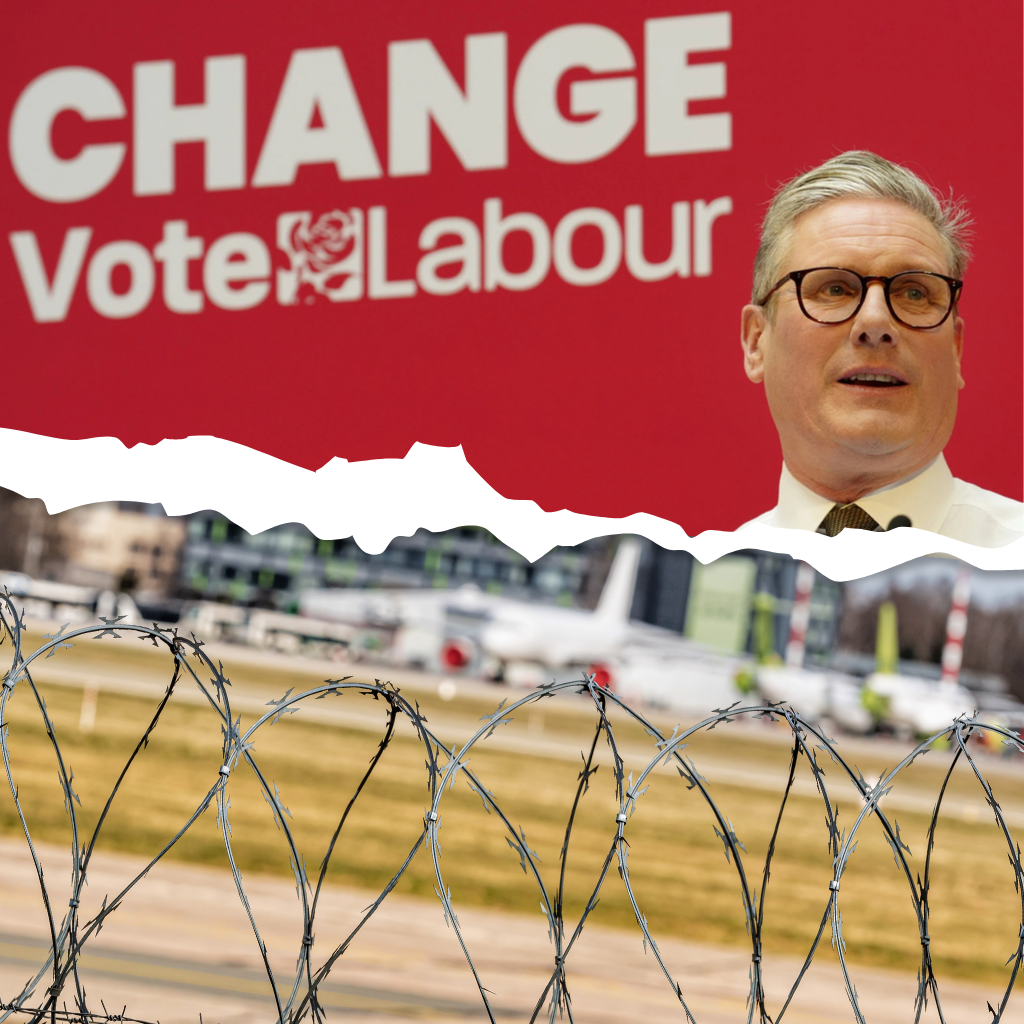Promises, Pressure, and Precarity: Immigration in Labour’s Britain
Written by: Christopher Desira

In a move that has ignited fierce debate across the political spectrum and within the business community, the UK government announced significant changes to the immigration system via the Immigration White Paper, Restoring Control over the Immigration System.
In this article, learn about Labour’s UK immigration reforms and their potential impact on migrants and employers.
Key Changes to the Immigration System
The reforms overhaul work visas, study routes, family visas, and settlement rules, emphasising high-skilled migration and integration.
What are the key changes to UK Work Visas?
Skilled Worker Route: The skill threshold rises to RQF 6 (bachelor’s degree level) from RQF 3, with higher salary requirements. Access to the points-based system will be restricted to shortage occupations, guided by the reactionary Migration Advisory Committee (MAC) and workforce strategies. The Immigration Skills Charge will increase in an attempt to encourage investment in domestic talent.
Social Care: Overseas recruitment for care workers ends, with a transition period until 2028 for visa extensions and in-country switching. This aims to address exploitation but risks staffing shortages in a pressured sector.
High-Skilled Talent: While the UK becomes less welcoming to many, the government simultaneously aims to attract “top global talent” through enhanced high-skill routes and accelerated settlement options by seeking to attract the best from abroad while limiting opportunities for others.
Study Visa Restrictions Tightened
Graduate Route: The length of time international students can remain in the UK after graduation will be reduced from two years to 18 months, undermining one of the UK’s biggest draws in global education.
Sponsor Compliance: Institutions sponsoring international students will face tighter, and more costly, compliance rules, including minimum pass rates and a new “Red-Amber-Green” banding system. Underperforming sponsors could face limits on student recruitment.
Student Levy: The government is also exploring a levy on income from international students, assuming they can find rewarding employment, with potential reinvestment into domestic education and skills.
Short-Term Study: The short-term study route for English language learners will also face tighter regulation.
Family Visa and Settlement
English Language: English language requirements will be tightened across all immigration routes. Skilled workers must now meet B2-level proficiency, while adult dependants will need to demonstrate A1 English on arrival, progressing to B2 by settlement.
Settlement: Pathways to indefinite leave to remain will also become longer and more difficult to achieve. Excluding the EU Settlement Scheme, standard qualifying period for indefinite leave will double from five to ten years. While some exceptions may apply for those making “significant contributions,” the broad path to settlement will be narrowed. The Life in the UK test is also set for reform.
Family Framework: Rules will limit “exceptional” cases, with legislation addressing Article 8 family life arguments to separate families and streamline deportations.
Enforcement and Integration
Foreign Offenders: The Home Office will be notified of all foreign national convictions, not just those who go to prison, with broader deportation powers.
International Cooperation: Government globally will be encouraged to support deportation and removals, particularly where there are barriers to returning their citizens.
A Political Tightrope Walk
The Labour government’s focus on tightening immigration controls raises questions about its broader political priorities. Why, amid ongoing cost of living pressures and public service challenges, is immigration receiving top billing?
One explanation lies in public perception. While the root causes of economic insecurity are complex, immigration is often viewed, wrongly, as the contributing factor. Stricter controls may be aimed at reassuring voters who feel unheard or anxious about national identity and community cohesion.
The rise of Reform UK also presents a political threat. Labour’s approach may be a bid to neutralise that challenge by co-opting its messaging. By announcing these reforms well ahead of the next general election, Labour allows time for policy implementation and potential reductions in net migration, while also absorbing any economic fallout before campaign season.
But this strategy has its risks. Why is the government not instead investing its energy in addressing the cost of living, housing shortages, or public sector funding. An ambitious government should aim to lift everyone up, not drag others down. The fear is that the government continues a legacy of Conservative immigration policy albeit with softer rhetoric.
Businesses Divided
Business reactions are mixed. Sectors reliant on migrant labour, particularly care, hospitality, and agriculture, are likely to be alarmed by these policies. Workforce shortages could worsen, undermining service delivery and productivity.
Universities, which rely heavily on international student fees, should be concerned about the shortened Graduate Route and a possible levy on overseas income. These changes could weaken the UK’s global education brand.
Conversely, high-skill industries might welcome greater incentives for top global talent, but they will face increases to the Immigration Skills Charge.
In Scotland and Wales, where demographic challenges differ, businesses may be severely impacted. These nations rely more heavily on immigration to meet labour needs, yet their businesses already struggle to employ international staff with existing rules for prospective workers, which include the increase in salary thresholds from 2024 that are now set to rise further. As a result, calls for region-specific immigration rules are likely to grow louder.
The economic consequences of these reforms risk being wide-ranging, potentially leading to labour shortages in critical sectors, wage inflation in others, higher training costs for domestic workers, and increased risks to the higher education sector. Supporters may argue that reducing migration will ease pressure on public services and improve wage conditions. However, in the short to medium term, the likely outcome may be reduced economic growth, higher costs for employers and consumers, and a decline in the UK’s overall competitiveness.
The Human Cost
The government’s focus on stricter immigration controls carries serious societal and familial consequences. Extending the time required to achieve settlement or citizenship risks trapping families in prolonged precariousness, fostering anxiety, stress, and limiting their ability to put down roots in their communities. Ongoing uncertainty can put a significant toll on families’ mental health and overall well-being without clear evidence that it will deter family visa applications. The real driver remains the fundamental human need for family life and the potential of each person’s dreams.
At a societal level, portraying migration and migrants in such a negative light, as harmful to UK society, not only echoes far-right scapegoating but also undermines the government’s apparent stated aim of building stronger communities. Rather than fostering bonds between neighbours and encouraging investment in local areas, this narrative hinders integration by promoting xenophobia and increasing the risk of hostility towards both migrants and non-migrants. It is likely to have a particularly damaging impact on communities already made vulnerable in the UK especially racialised and visibly Muslim individuals. Whilst memories are short, we must remember that the riots which took place in August 2024 caused incredible levels of fear among our communities and particularly those racialised as such. That fear has not gone away, instead it is heightened with continued hostile rhetoric.
Inequality and Fairness
Several aspects of the new immigration rules risk disproportionately affecting individuals and families from some countries. The increased English language requirements may present a significant barrier to those from regions where English is not widely spoken or where access to quality language education is limited. While the policy claims to promote cohesion, it risks excluding individuals based on learning ability, nationality or socio-economic background. If not carefully revised, the Life in the UK test may also reinforce cultural bias.
The emphasis on attracting “top global talent” and high-net-worth individuals demonstrates a preference for wealthier applicants, often from more developed nations, while undervaluing the contributions of people from diverse backgrounds and skill levels. These policies may also intensify the problem of “brain drain,” undermining the development of countries already struggling to retain skilled workers.
While the language of the White Paper avoids overt discrimination, the practical effect of these reforms risks entrenching systemic inequity, favouring wealth, privilege, and nationality over fairness and inclusion.
Conclusion
The UK government’s immigration reforms mark a significant turning point, driven by political calculation and shaped by public anxiety. While intended to demonstrate control and restore confidence, they risk economic disruption, societal division, and diminished fairness.
As the effects of these policies unfold, the real test will be whether they deliver improved outcomes—or simply reinforce the very inequalities and insecurities they claim to address.
Picture: Simon Dawson / No 10 Downing Street
-

The Labour government’s new immigration bill: A new bill, but the same old approach
Written by: Caroline Echwald
The Labour government has introduced the Border Security, Asylum and Immigration Bill, claiming it will strengthen border security and dismantle criminal networks exploiting vulnerable migrants. At first glance, this might sound reasonable—but scratch beneath the surface, and it becomes clear that this bill continues the same harmful approach to migration that treats people as threats rather […]Read article -

From words to violence: How racist rhetoric and scapegoating is fuelling the ongoing far-right violence
Written by: S. Khan
In response to the recent surge in organised racist, Islamophobic and violent riots across the United Kingdom, we, Seraphus, stand in solidarity with those targeted by these despicable acts. The disturbing wave of far-right violence has not only inflicted fear upon racialised communities but has also attacked the institutions dedicated to supporting migrants and asylum seekers. Attacks […]Read article -

Changes to the Skilled Worker route: A Guide for Employers
Written by: Hannah Wilkinson
On 4 April 2024, the immigration rules changed to introduce higher salary requirements for skilled workers. In addition, these changes stopped care workers bringing dependents, and removed jobs from the shortage occupation list (now confusingly named the immigration salary list). This piece will provide an insight into the salary requirement changes, how they may impact […]Read article
Categories: Immigration NewsImmigration Rights
